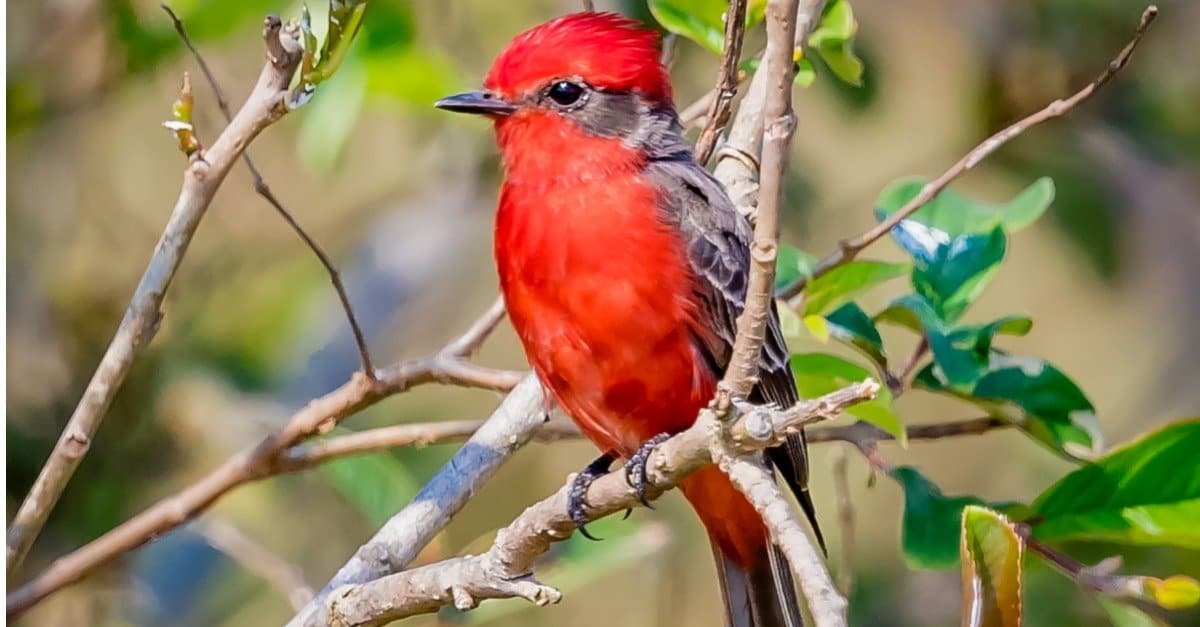A flash of crimson catches your eye against the stark background of winter in Texas. The contrast in colors is visually striking. Your eyes search the landscape, hoping to catch a glimpse. And there, perched atop a branch, is a gorgeous bright bird.
You may ask yourself, what species is this? Maybe you’re an amateur bird watcher, or perhaps you want to attract a specific species to your backyard. Whatever your reason, These 15 red birds in Texas are fascinating creatures to study or admire at your birdfeeder.
Northern Cardinal

Northern cardinals
live year-round in Texas.
©iStock.com/BeyondMyLens
These bright red birds are well-loved across the US and easily identifiable. This bird has a body, head, and tail, with black around its beaks. Only males sport the famous red plumage; the females are a tan-gray color. These active songbirds are relatively social and mate for life, raising their young together. Cardinals like to frequent backyard feeders and will also eat fruit, grains, seeds, insects, and sap. These redbirds do not migrate and are common in warm climates in the Southeast. You can see northern cardinals all year in Texas and attract them to your birdfeeders with sunflower seeds, peanut hearts, milo, and millet.
American Robin
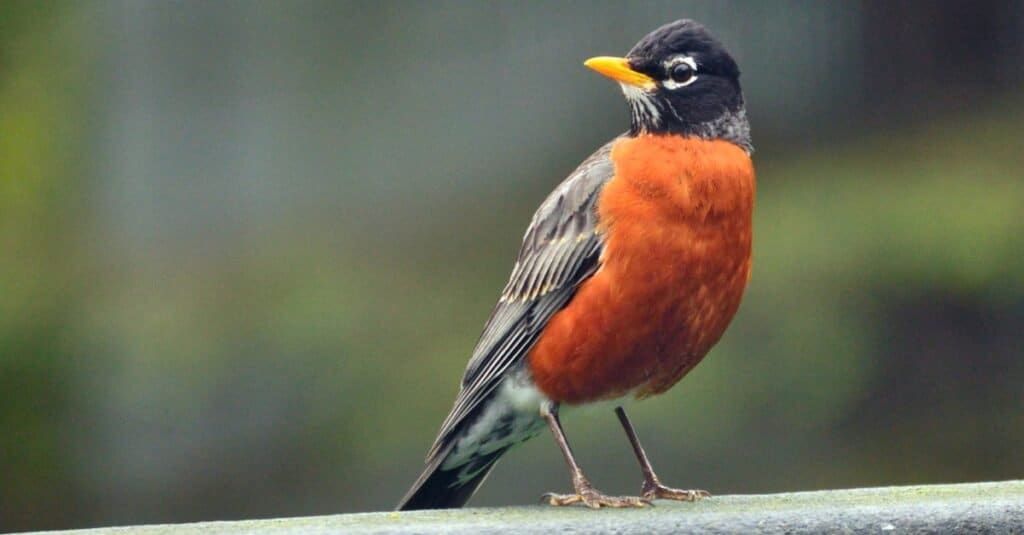
The
American robin
lives in Texas all year, but you can spot them more frequently from November to April.
©iStock.com/PhotosByMSA
The robin is a distinctive red bird in North America. This potbellied bird has a black body, head, and tail, with a rusty-red color on its chest and underparts. There is also a noticeable white stripe on its throat. They have a pleasant song and frequent areas with a high human population. You can find these robins in Texas year-round, but their numbers become abundant from early November to late March. Their diet includes eggs, small snakes, frogs, and fruit. They don’t eat birdseed and prefer to forage for their food. Place chopped apples, berries, and meal worms on your lawn to attract this species.
House Finch
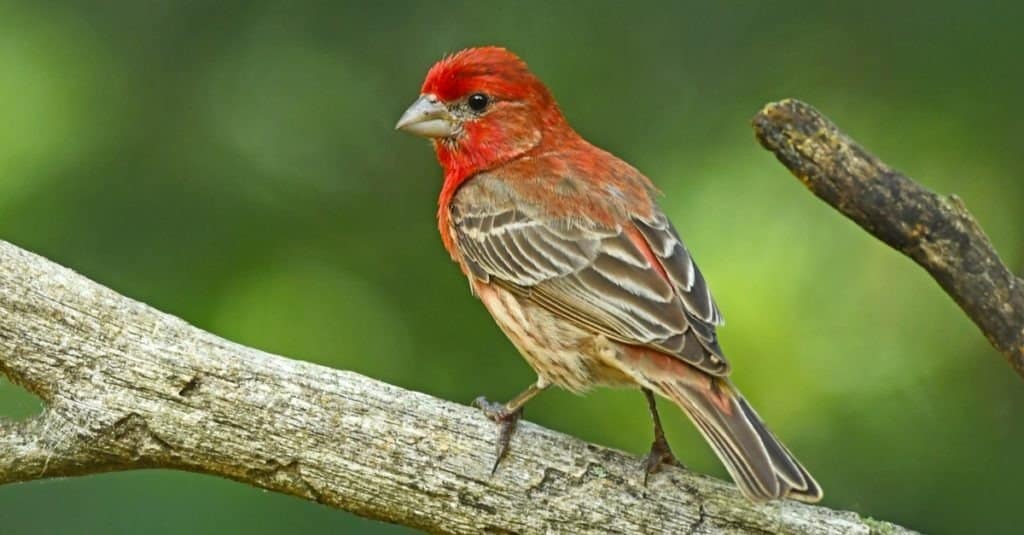
The house finch resides in almost every state.
©Brian A Wolf/Shutterstock.com
This small finch is common throughout the United States, residing in almost every state and habitat. It has a long, notched tail, short wings, and a small bill. Its chest and head are reddish-orange, and its belly is white with dark streaks. The house finch frequents suburban areas and is attracted to birdfeeders. Its diet includes weed seeds, flower parts, berries, and insects. You can attract these beautiful birds by placing black oil sunflower seeds in your feeders.
Purple Finch

The purple finch migrates to Texas in the winter from October to April.
©Fiona M. Donnelly/Shutterstock.com
The purple finch is actually a rose red color and is a migratory bird found mainly in the Northeast and the Pacific Coast. They prefer less-populated habitats and can be found in Texas during the winter from October to April. This finch is short and stalky with a notched tail. Its body is primarily red, with the head and rump being the brightest. The back and tail are a brownish color with streaks of pale pink. The purple finch mainly eats seeds, berries, buds, and insects. You can attract this species with black oil sunflower seeds.
Summer Tanager
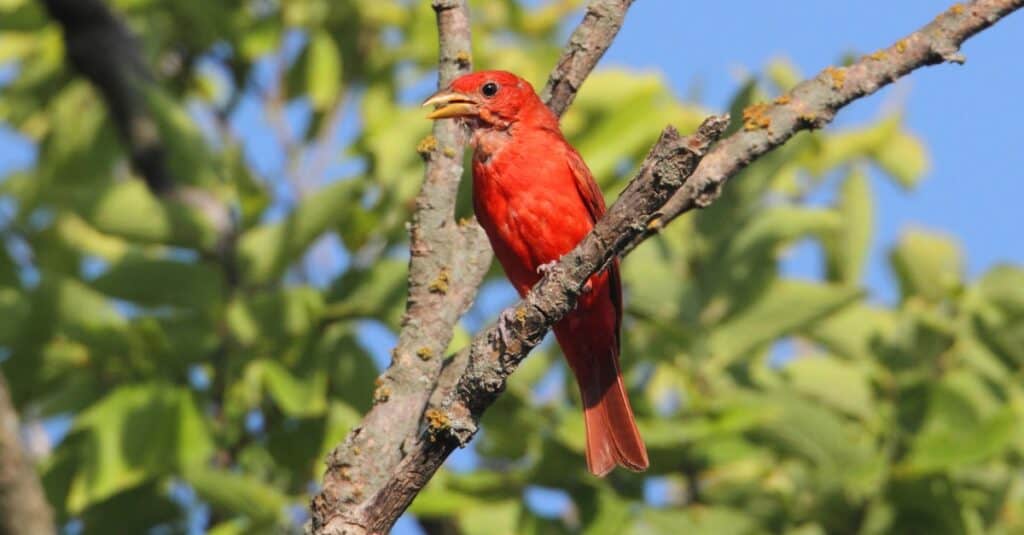
You can find
summer tanagers
in Texas year-round, but more commonly during the spring and summer.
©iStock.com/SteveByland
The summer tanager is a spectacularly colored bird with blood-orange feathers found in Texas year-round. However, you can see them more often during the spring migration and throughout the summer—this species is bright red all over with a larger body and sluggish movements. They are forest songbirds usually found in woodlands, feeding on bees and wasps. Plant berry bushes and fruit trees to attract summer tanagers to your yard.
Vermillion Flycatcher

The
vermilion flycatcher
is frequent in South Texas throughout the year.
©iStock.com/jsdeoliv
Vermillion flycatchers have a bright red front and brown on their back and across their face, which resemble a mask. Females are brownish-gray with pale red bellies. They are pretty common in Texas, and you can find them throughout the year, but they are more common in South Texas. They prefer desert landscapes where they hunt for insects and sit on perches. You can use mealworms to attract these red birds.
Painted Bunting

Painted buntings are easy to spot in Texas from April to October.
©iStock.com/passion4nature
These vibrant, dazzling birds are bright red underneath with indigo-colored heads, green wings, and backs. The painted bunting stands out in most environments and is a sight for most bird watchers. This species prefers semi-open habitats where it enjoys meals of seeds and insects. You will find them in Texas all year, especially during the April to October breeding season. Fill your feeders with sunflower seeds and white millet.
Cassin’s Finch
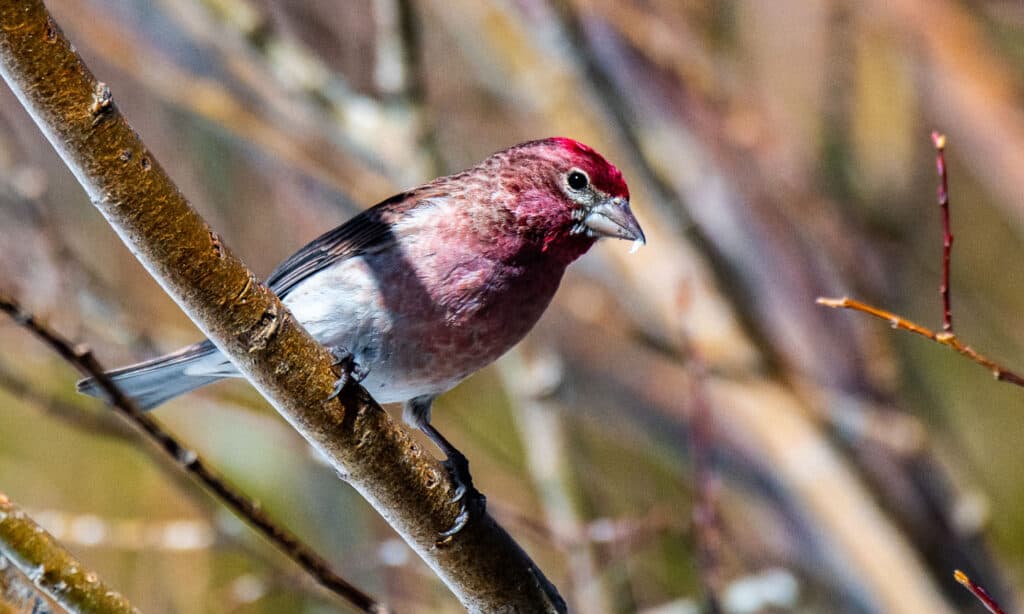
©Kerry Hargrove/Shutterstock.com
The Cassin’s Finch has a red crown with a brownish-pink-streaked neck and back. It’s slightly larger and has longer wings than the purple finch, and is often seen in small flocks near pine forests. It will join the house finch at bird feeders near residential areas. However, this finch is hard to spot in Texas. The best time to spot one is in the winter on the west side of the state. They eat seeds and fruit, and you can attract them with sunflower seeds or fruit shrubs.
Common Redpoll
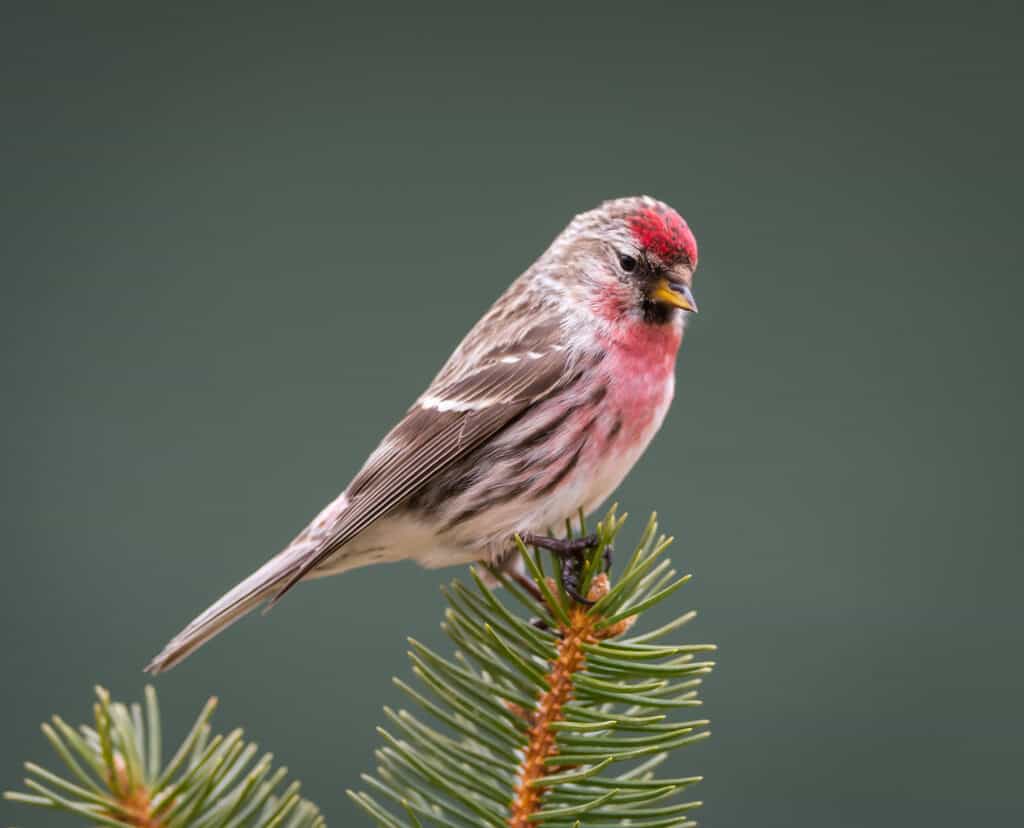
The common redpoll is rare in Texas. Try the northern part of the state during winter.
©FotoRequest/Shutterstock.com
This species is rare in Texas. But you may be able to spot one in the northern part of the state during the winter. Common redpolls have brown backs, white bellies, and red breasts and foreheads. They are relatively small with tiny, pointed beaks and a deeply notched tail. Their preferred habitat is a weed field with trees where they can feed on catkins, a cylindrical flower cluster. Place thistle in your feeder to attract this red bird.
Scarlet Tanager
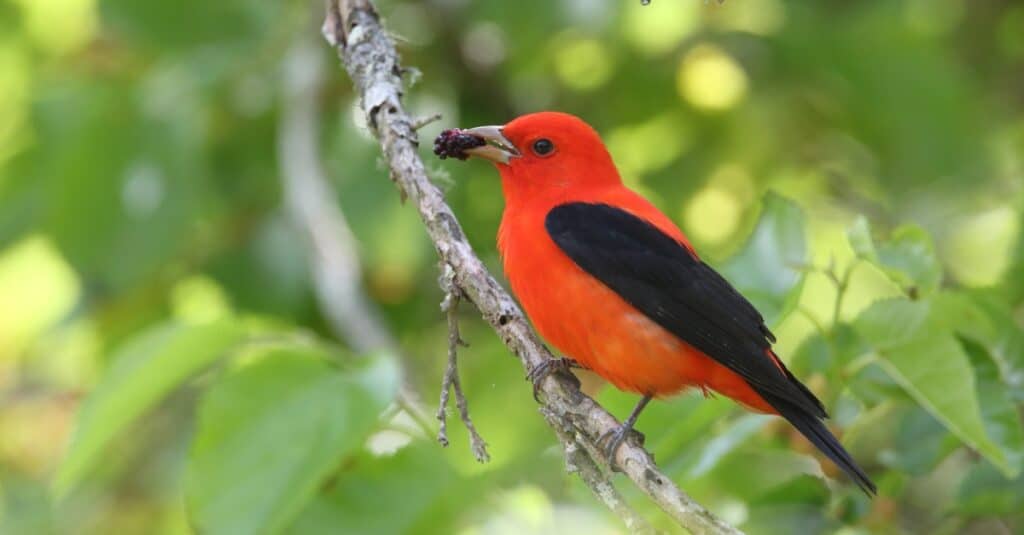
Scarlet tanagers
migrate to East Texas in the spring, and some stay during the winter.
©iStock.com/BrianLasenby
The scarlet tanager is striking with its bright red body, jet black wings, and tail. These brilliant birds migrate to Eastern Texas in April and May, and some may stay during the winter, leaving in January or February. They like to remain high in the forest canopy while eating fruit and may be hard to spot. Attract these colorful birds to your property by planting berry plants like blackberry, huckleberry, and juneberry.
Flame-Colored Tanager
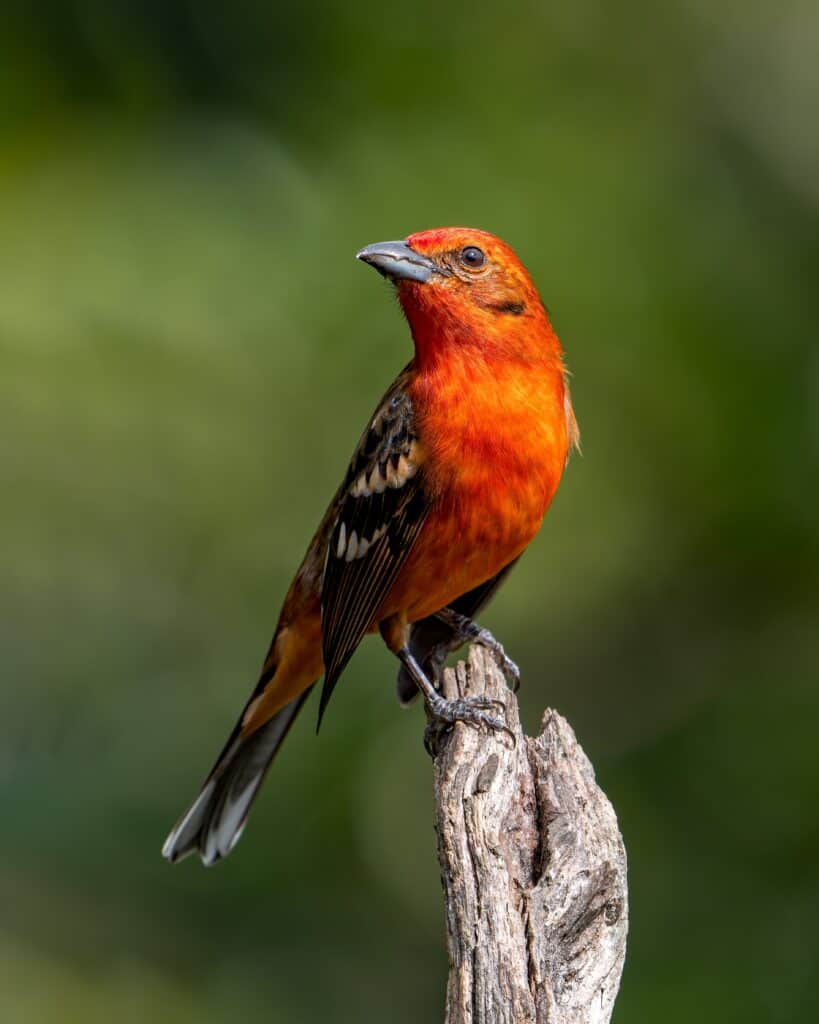
Head to Big Bend National Park in the spring and summer to catch sight of a flamer-colored tanager.
©Tyler Wenzel/Shutterstock.com
Flame-colored tanagers have orange-red bodies, gray wings, and tails with streaks of white. This species mainly inhabits Mexico and Central America but is increasingly spotted in places in the US like Texas and Arizona. You are more likely to spot these rare birds in Big Bend National Park or along the Gulf Coast between March and August. This bird may be challenging to attract and eat insects and berries.
Hepatic Tanager
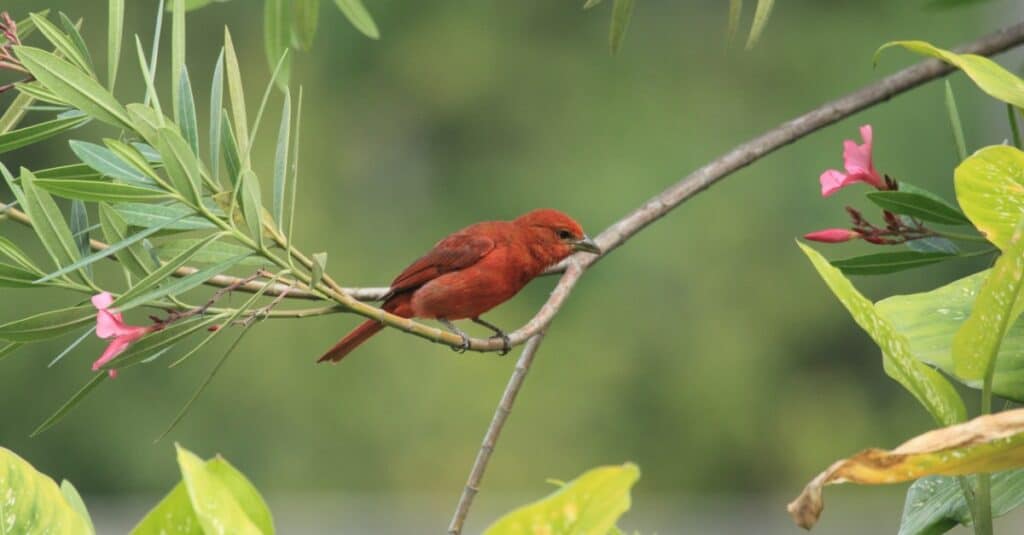
The hepatic tanager lives in the Texas
mountains
during the summer.
©iStock.com/emarys
The hepatic tanager has a red-orange coloring over most of its body, except for its back and wings, which are brownish-gray. This species of tanager is scarce in Texas, but you may be able to spot them during the summer in Big Bend National Park and the Davis Mountains. They breed in the Southwestern United States and spend winters in Mexico, Central America, and South America. They prefer mountain ranges and woodland habitats where they can freely feed on spiders, berries, and other insects.
Pyrrhuloxia
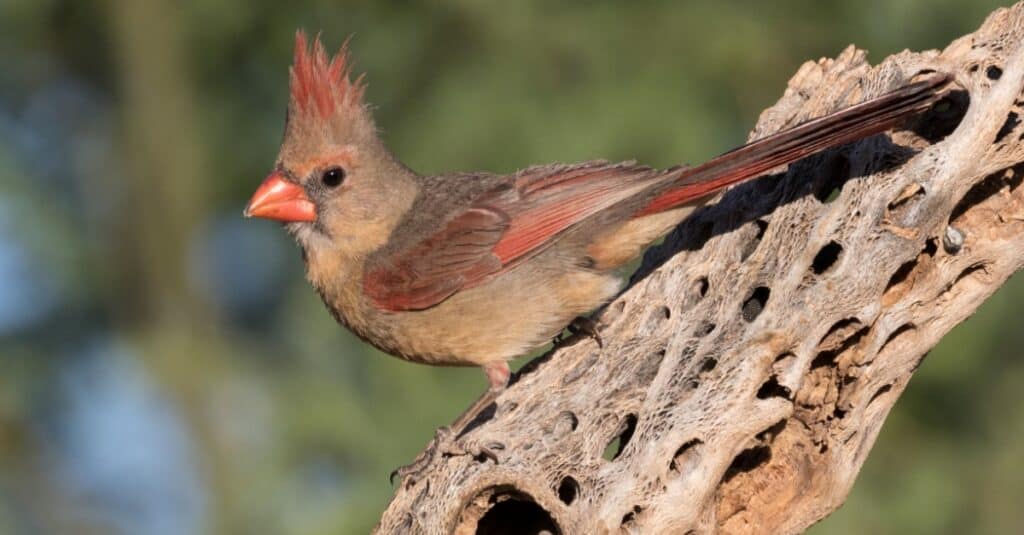
Pyrrhuloxia is native to Texas and abundant in the western part of the state.
©iStock.com/Dee Carpenter Photography
This bird is a native resident of Texas, New Mexico, Arizona, and Mexico desert climates. They are the tough songbirds of scorching deserts and are abundant in the Southwest parts of the country. You will find this bird species in West Texas throughout the year and can attract them to sunflower seeds scattered on the ground. These birds are grey with red coloring on their face, chest, belly, and tail. They eat seeds and insects.
Red Crossbill

The red crossbill is hard to find. Try West Texas for a rare sighting.
©iStock.com/bobloblaw
The red crossbill is part of the finch family and has a distinctive beak crossed at the tips. It has a dark red coloring on most of its body with darker wings and tail. Living in forest environments, it forages with its flock from tree to tree. This unusual-shaped mandible allows them to extract seeds from cones and fruit easily. While they live in the state all year, they are hard to find. Your best chance to spot one is in West Texas.
White-Winged Crossbill
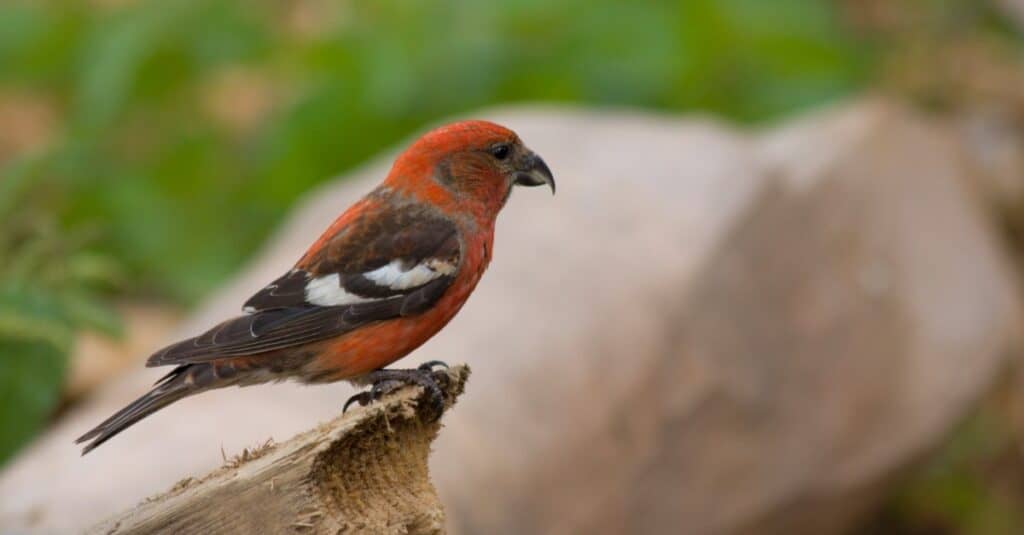
The white-winged crossbill has only been sighted a few times in Texas around Houston and
San Antonio
.
©iStock.com/tkosachev
Similar to the red crossbill, white-winged crossbills are in the finch family and have crossed beaks for eating seeds. Its head and underside are red, and its wings and tail are a dark gray color with white stripes. These crossbills live in forest habitats in the northern part of the continent, like Alaska, Canada, and other northern states. A white-winged crossbill sighting in Texas is rare, with only a few visitors within the last ten years. However, there is always a possibility you might catch one near San Antonio or Houston. Traveling up north is your best bet in seeing this species up close.
Up Next
Thank you for reading! Have some feedback for us? Contact the AZ Animals editorial team.

